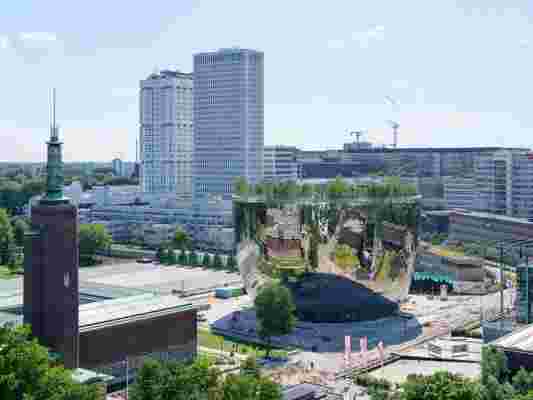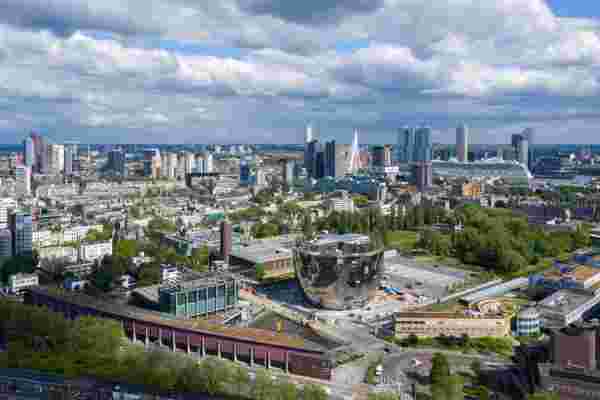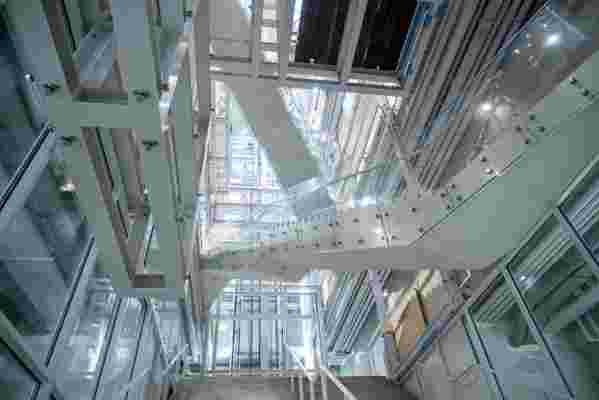MVRDV Completes the World’s First Public Art Depot
Strolling through a museum, it may feel like you’re taking in everything the institution’s collection has to offer, but in most cases you’re barely scratching the surface. Vast arrays of art and artifacts are frequently tucked away in storage, far from the public eye. But next year, visitors to the Museum Boijmans Van Beuningen in Rotterdam will be able to experience more of the museum’s collection. Architecture firm MVRDV has recently completed Depot Boijmans Van Beuningen, the first publicly accessible art depot in the world, in Rotterdam’s Museumpark. The over-160,000-square-foot building will hold 151,000 artworks, many of which visitors will be able to access without a guide.
“The assignment was to bring all artworks together in one building, but we didn’t want to design a building that would compete with the many museums it was surrounded by, and we strongly felt there shouldn’t be a backside,” says Fokke Moerel, partner at MVRDV. “We wanted it to be open to and for all, since it is a very democratic building.” The structure was designed with a bowlike shape, minimizing the footprint while creating a spacious roof deck. But perhaps the most eye-catching aspect of the design is the reflective exterior, which is made up of 1,664 mirrored panels. The panels reflect the building’s surroundings, allowing it to blend into the landscape of Museumpark and the city. “It is like a painting, reflecting the complete skyline of Rotterdam, plus the ever-changing sky, like in a life painting,” says Moerel.

The most distinctive part of the building is the reflective exterior, which is made up of 1,664 mirrored panels.
The building is arranged in five different climate zones, and artwork will be displayed according to preservation needs rather than by period. “A selection of works will be placed in one of the 13 gigantic glass display cases in the soaring atrium; others are visible while being preserved in one of the four restoration studios,” says Moerel. Visitors also have the chance to peer into these studios and get a glimpse at the conservation and preservation process. “The digitized film and video collection can be consulted in special viewing booths, and the rest of the collection, which is stored in the storage rooms, will be made visible through glass windows and tours with a guide and a security guard,” says Moerel.

An aerial view of the museum shows how it reflects the surrounding landscape.
Staircases crisscross through the structure’s atrium and lead to the rooftop forest. The forest is populated by 75 birch trees that were specially bred for rooftop conditions, and coniferous trees will be added as well. “The rooftop forest will become a public space, accessible without a ticket to the museum,” says Moerel. “We envision it as the new green living room for the city. The roof isn't open yet, but already it has been declared the most beautiful roof in the Netherlands.” The rooftop will also be home to a restaurant that is likewise accessible to the general public.

While the exterior has been completed, work on the interiors still remain. The bowlike space means that visitors will move up and down a series of exposed stairs to visit each section, adding more visibility to the design.
Sustainability was carefully considered within the project. The building is energy neutral thanks to a combination of solar panels, LED lights, insulation, and geothermal heat exchange. The basement level features a rainwater-storage system, and the collected water will be used for irrigation and toilets.
Now that the building has been completed, the process of relocating the museum’s collection will begin. Depot Boijmans Van Beuningen is scheduled to open in the fall of 2021.